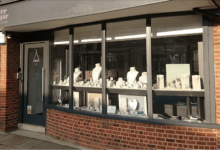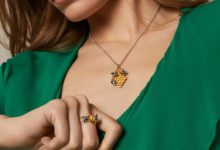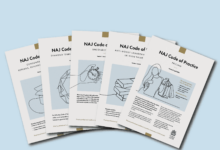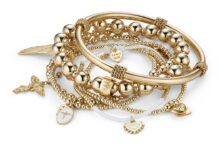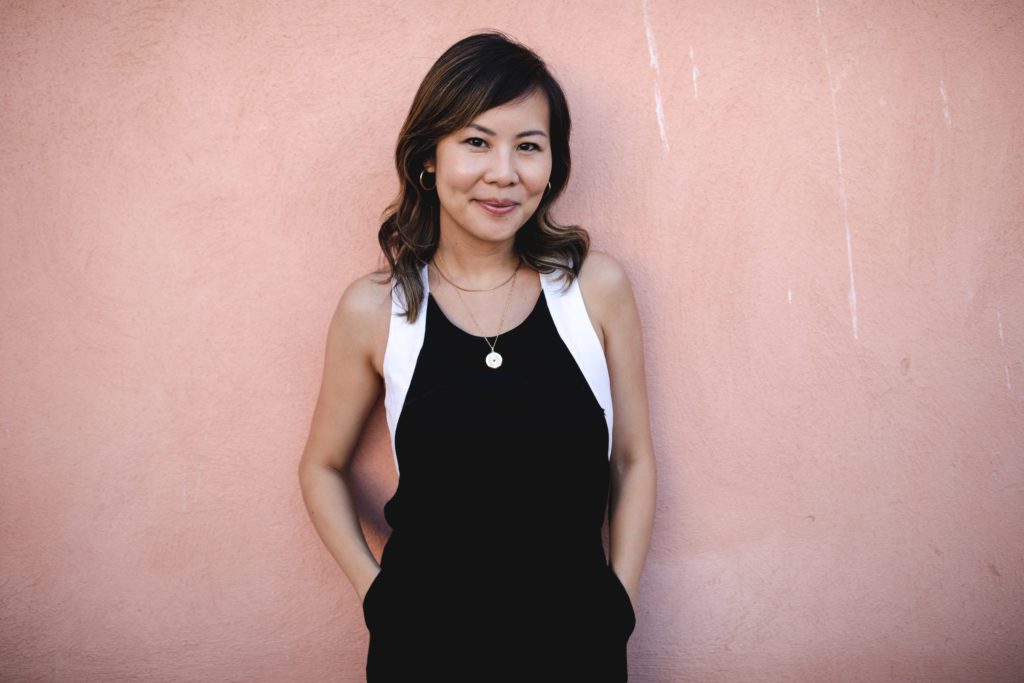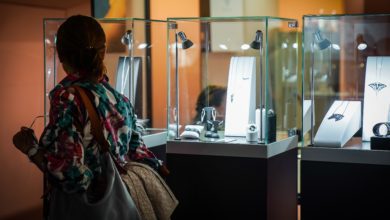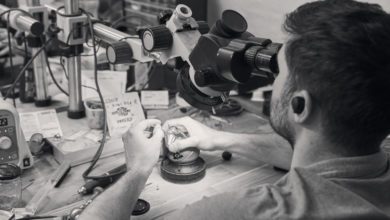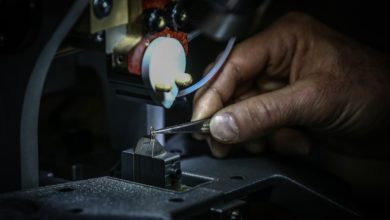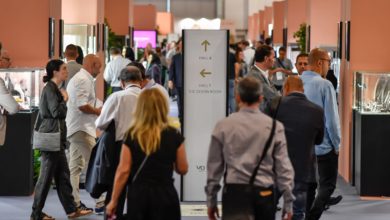Edge of Ember: Forging a sustainable future
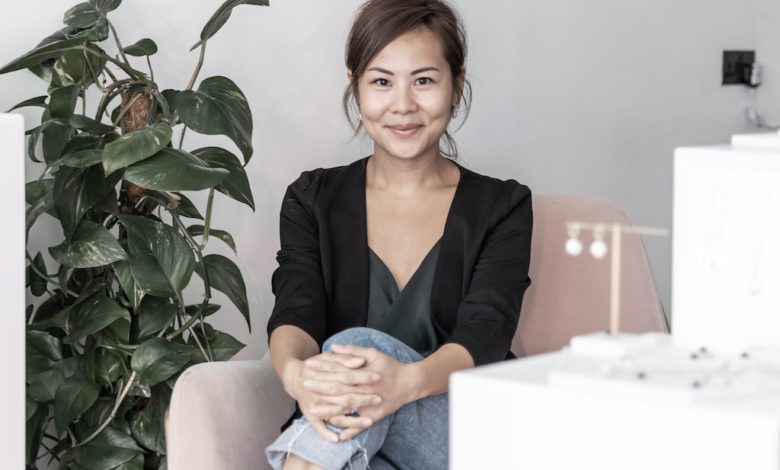
As we enter the age of the unknown following the peak of the Covid-19 pandemic, industries are finding themselves at a crossroads and looking for change. While consumers and creators begin to look beyond traditional norms, more and more brands have turned towards diamonds’ much younger cousin: the lab-grown variety.
One such brand is Edge of Ember, a London-based company about to launch a new collection made exclusively from lab-grown diamonds. Speaking with its founder, Lynette Ong, we found out more about the processes which may well come to define the next era of the industry.
Lab-grown diamonds are made using a tiny piece of diamond, known as a seed, which is then placed into a vacuum chamber with gas and heated to about 800 degrees. This whole process releases carbon which then layers onto the seed, working to physically grow into the new diamond itself. Unlike natural mining, the entire process is done in a manufacturing facility.
“The fact we can now create this in a lab, atom-by-atom, is really amazing”, says Ong. “Chemically speaking, it’s exactly the same as a natural diamond. It’s made of carbon, and you get the same grades and quality that you would find with natural diamonds. Plus, the process doesn’t come with all the environmental and human impact that comes with the mining industry. And that’s something that people are more and more aware of.”
Proponents of lab-grown diamond manufacturing say it eliminates deforestation, the destruction of ecosystems, and all the chemicals emitted during the mining process. “Then, of course, there’s the human impact of mining, because mining happens in communities where there’s such extreme poverty and almost no labour laws for workers in the diamond industry”, Ong adds.
Could a growing awareness of these issues catalyse the demise of natural diamonds? The latest Global Diamond Report, published in association with the Antwerp World Diamond Centre, found that rough diamond sales were expected to fall by 25% by the end of this year, citing consumers’ growing demand for environmental and social responsibility as one of the main drivers of this downfall.
According to the report, while rough diamonds may have started to lose their shine, the global production of lab-grown diamonds grew by 15% to 20% between 2018 and 2019, with the majority of growth coming from China. Meanwhile, analytics group Televisory predicts that this market is forecasted to reach £4bn by 2023, up from £1.4bn in 2018. If this rate of growth is sustained, the market’s current capacity of 2 million carats is expected to reach over 15 million carats by 2035. Alongside this growth, Televisory said advancements in technologies will improve the market’s production economies and “push the price down further”, which will in turn see more market share taken from the natural diamond industry.
Ong also discusses the cost-advantage to using lab-grown diamonds. “It’s so much more efficient than shipping all the machinery and digging down deep into the Earth”, she says. In light of this, Edge of Ember’s lab-grown diamonds are typically about 20% to 30% cheaper than their mined equivalent, despite having the same grade and same quality as natural diamonds. This cost-efficiency is later passed on to customers.
“This benefit ultimately ties in with our ethos of making everyday luxury just that bit more affordable. That’s why our new lab-grown diamonds collection that we’re launching on 8 September is a 13-piece collection, with pieces selling at around £300.”
The collection marks the brand’s first venture into using lab-grown diamonds, and has been almost two years in the making. “I remember wanting to use diamonds a year and a half ago, and I wanted to use ethically sourced diamonds”, says Ong. “I did the research and talked to suppliers, but it was surprisingly difficult to source ethical diamonds. There’s limited transparency in mined diamonds, and because diamonds change hands so many times during the supply chain, it was really difficult to guarantee they were ethical.”
While the inability to find properly certified and verifiable ethical diamonds was frustrating for Ong, she came to learn more about lab-grown diamonds during this process. “It just felt like a really natural choice for us”, she adds. “There’s more transparency, and it just felt like the new way forward.”
The collection is yet to launch, but Ong believes her customers will anticipate the move. “At the end of the day, I think our customers are looking to make the conscious choice of purchasing ethical and sustainable fashion pieces, and make that important consumer decision. So I do think it will be well-received.”
Is the industry, as a whole, beginning to swing towards more sustainable products in general? “I think we’re definitely moving towards that”, she says. “Consumers today are becoming so aware of their choices, and are looking to make purchases that are as ethical and sustainable as possible.”
“I do believe that the jewellery industry has been very much traditionally set in gemstones and natural diamonds, but change will be led by a handful of progressive jewellery brands, as well as a change in consumer demand. Once consumers get to know more about what a lab-grown diamond is, I do believe the rest of the industry will definitely follow.”
Ong believes that ultimately, lab-grown diamonds will become the “norm” in the near future, or at the very least become more acceptable. “It won’t be known as a ‘fake diamond’ amongst consumers”, she says. “It will instead be known as an ethical diamond, an ethical alternative to what has been produced by the industry for decades.”
She notes that the industry should recognise that consumers are beginning to ask more questions about where their products are coming from, with an increasing trend to explore more sustainable alternatives. “I think a lot of it will depend on us, as jewellery brands, really pushing the boundaries and educating customers.”
On the question of whether lab-grown diamonds will become a focus point for jewellers as well as consumers, Ong does sense a shift in manufacturer’s attitudes. “Even in the last year-and-a-half,” she says, “when I first learned about lab-grown diamonds myself, more jewellery brands have started to use them. Even the bigger players such as De Beers have set up their own brand using lab-grown diamonds. And I think in the next two or three years, it really will become widespread throughout the industry.”
This shift towards lab-grown diamonds is underlined by the fact that international natural mines have notably struggled amid the pandemic and localised lockdowns. Alrosa Group, the world’s largest diamond miner by volume, saw trade “virtually stop” in April following pandemic-related restrictions, for example.
Will the effects of the Covid-19 pandemic accelerate the shift away from natural mines? “Yes, definitely”, says Ong. “The pandemic has really shaken up the supply chain, and I think jewellers and brands are now looking more towards producing locally, or finding more efficient ways of sourcing and producing. Lab-grown diamonds are a much more efficient way to do this. And with travel being so limited right now, it’s definitely going to propel this change in the industry.”
Lab-grown diamonds are not the only way Ong’s brand is following its eco-conscious ethos. In the latest collection, for example, 100% solid recycled gold is being used alongside the lab-grown diamonds. The collection will also be fully carbon-neutral, with the brand offsetting any carbon emissions produced during the process by purchasing carbon credits. “Also, about 70% of our pieces are currently made from recycled silver and gold”, adds Ong. “Our target is to move 100% of our pieces to recycled metals by the end of next year.”
Looking ahead, Ong says the brand will continue moving towards more sustainable materials, and working with ethically-sourced gemstones with more transparency. “Rather than big collections and moves”, she says, “it’s more about integrating it into every part of our brand story. And our brand story has always been one about empowering women with ethically produced and personalised jewellery, So we will continue to heavily invest in our designs, our ethos, our messaging.”
Ong’s advice for designers or brands who were looking to become more eco-conscious is “to not be afraid of using something that bigger brands have not necessarily used before”. “Just because the traditional players haven’t used it, she says, “doesn’t mean you can’t be a leader, or that this isn’t the next big thing”.
“If you really believe in it”, she adds, “and you’ve done your research, and you know that the value and quality is there, you should definitely follow your heart and pursue it. At the same time, have a proper, thought out plan in terms of educating consumers, as that’s obviously a big part of the marketing strategy.”
She concludes: “Even if you are just starting out, remember that you don’t have to be 100% sustainable or 100% ethical. We started as a small brand, and it’s difficult for small brands to be 100% anything, really, as you’re so limited by people and budget and everything else. I believe that no matter where you start, the most important thing is to just consistently push your boundaries, and keep improving along the way.”
If lab-grown diamonds can dominate the market, there is still some way to go. Natural diamonds still represent around 95% of the global diamond supply, after all, and will not go away anytime soon. Nonetheless, we have seen industry reports point to their decline in the coming years, and according to Televisory, there is “no past trend which states that this declining trend is set to reverse anytime”. In the long run, the affordability and sustainability of lab-grown diamonds, as well as advancements in technology, may see them well-positioned to be a serious contender in the industry.


